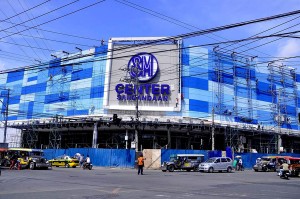History
 Some folks said that Caloocan got its name from a Tagalog word “lo-ok” (bay) because it is near to Manila Bay. Others insist that it was named after another Tagalog “sulok” (corner) because before, the place was located at the corner where the old towns of Tondo and Malabon met. Therefore, the name of the place is a mixture of the word “kasuluk-sulokan” which means “innermost area”.
Some folks said that Caloocan got its name from a Tagalog word “lo-ok” (bay) because it is near to Manila Bay. Others insist that it was named after another Tagalog “sulok” (corner) because before, the place was located at the corner where the old towns of Tondo and Malabon met. Therefore, the name of the place is a mixture of the word “kasuluk-sulokan” which means “innermost area”.
Caloocan is known as the Makasaysayang Lungsod (Historic City). Their claim of being a historic city has a basis. This was the place of the Katipuneros, a secret militant society formed during the Spanish colonization in the country. The place served as their main meeting place and history also said that this was the place where the members of the Katipunan made their historic “Unang Sigaw” which served as the starting point for the early Filipinos to carry an arm against their oppressors.
Population/ Language/ Area
According to the 2010 census, Caloocan is the country’s third most populated city with a population of 1,489,040. Languages spoken are mainly Tagalog.
The total land area of Caloocan City is 55.8 square kilometers. The land use is primarily in residential, commercial establishments, facilities, parks, among many other land uses.
Products and Services
Caloocan City’s 10th Avenue area is well-known for the clusters of motorcycle dealers and motorcycle spare parts dealers.
Business Opportunity
 Caloocan is in need of urban redevelopment. There is a need for modern commercial complexes, mass housing, malls and tourist facilities.
Caloocan is in need of urban redevelopment. There is a need for modern commercial complexes, mass housing, malls and tourist facilities.
Tourists Spots
- Tala Leprosarium – The Leprosarium was built in 1940. It is considered to be the oldest leprosarium in Asia.
- Bonifacio Monument – This monument is the main landmark of Caloocan situated at the intersection of Rizal Avenue and EDSA. The monument was built in honor of the Filipino Hero, Andres Bonifacio.
- Gubat sa Ciudad Resort – The resort is ideal for retreats, campings, birthdays, and company outings. It also provides seven swimming pools with matching water slides, hall pavilion, cottages, air-conditioned rooms, basketball and volleyball courts, children’s playground, Jacuzzi, and tree houses.
Festivals and Celebrations
 The City’s Foundation Day showcases annually the festival of “Pamaypay ng Caloocan”, with the use of “Pamaypay” or fan as it is showcased on techno-modern Folk Street dancing competition.
The City’s Foundation Day showcases annually the festival of “Pamaypay ng Caloocan”, with the use of “Pamaypay” or fan as it is showcased on techno-modern Folk Street dancing competition.
